2020 Shuchat Arts Fellows
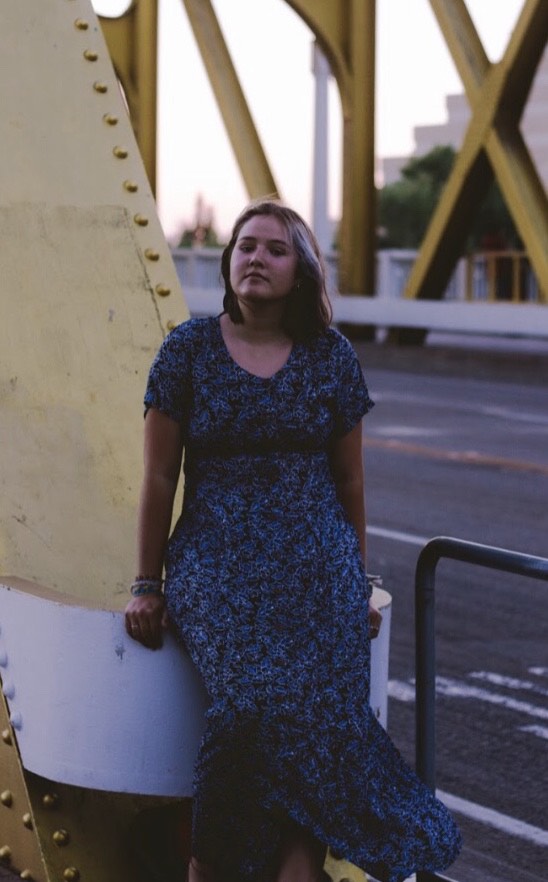 Cristina Chapa is a rising junior Latin American Studies Major and Music Minor, from Sacramento, CA. She has been playing piano since she was eight, singing since she was twelve, and performed in various bands since high school. Currently, she is the music director for Tandem A Cappella here at Willamette. Cristina has been composing original songs for the past four years and is excited to share her work with you all.
Cristina Chapa is a rising junior Latin American Studies Major and Music Minor, from Sacramento, CA. She has been playing piano since she was eight, singing since she was twelve, and performed in various bands since high school. Currently, she is the music director for Tandem A Cappella here at Willamette. Cristina has been composing original songs for the past four years and is excited to share her work with you all.
Cristina will spend eight weeks recording, mixing, and mastering an album of her original songs. This will feature her vocals and piano playing, as well as found sound and audio effects. In addition to documenting and disseminating her original compositions, the project will allow her to further her studio production skills and carry out her artistic vision. What she hopes to create is an album that conveys her experiences and messages she wants to put out into the world as a young queer Latina singer-songwriter.
Final Project: Blackberry Island
 A daughter of two Research Geneticists, Sarah Grahn grew up in a world shaped by science. Her family’s love of the outdoors led them on many trips to national parks and a childhood free of technology meant her free time was spent outside with her Sister. Fed by her own curiosity and love of discovery, Sarah began experimenting in the arts in any medium she could get her hands on. The subject matter often played at the intersection between science and art and once at Willamette she discovered just how important interdisciplinary work could be. Today Sarah explores how to effectively communicate complex ideas from the scientific world to a broader audience through her artwork.
A daughter of two Research Geneticists, Sarah Grahn grew up in a world shaped by science. Her family’s love of the outdoors led them on many trips to national parks and a childhood free of technology meant her free time was spent outside with her Sister. Fed by her own curiosity and love of discovery, Sarah began experimenting in the arts in any medium she could get her hands on. The subject matter often played at the intersection between science and art and once at Willamette she discovered just how important interdisciplinary work could be. Today Sarah explores how to effectively communicate complex ideas from the scientific world to a broader audience through her artwork.
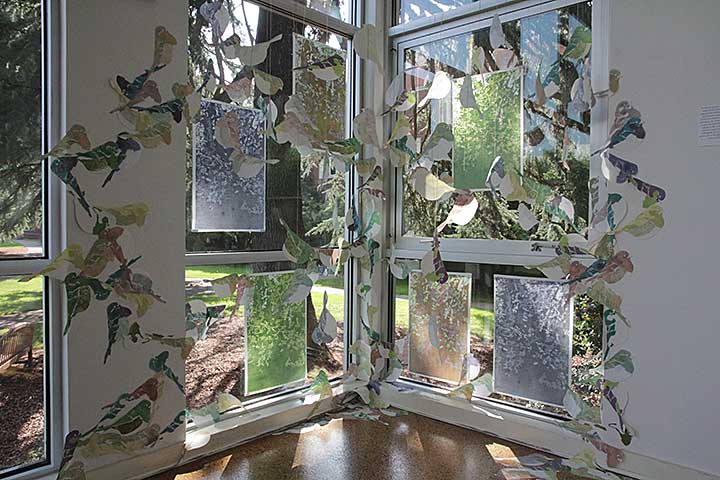 Sarah’s Shuchat Project is focused on gaining the necessary skills to effectively process climate change. The current dialogue surrounding climate change results in two kinds of actions: inaction, where people fear their own powerlessness and thus avoid taking any steps that might expose them to that experience, or they become reactionary and their choices are made from emotions of anger and fear. For her installation project Sarah wants to engage her viewers in the feeling of powerlessness, in order to teach them not to fear the loss of power. Through this she hopes the viewers will feel less afraid of situations where they may be exposed to a loss of personal control. For the first part of her project Sarah will combine drawing with the practice of meditation and focus on mindful actions and thinking while engaging with natural spaces on the Willamette campus. The second part of her project will focus on translating her drawings onto copper plates for etching. She will then create enough unique multiples of these prints to cover the entire floor of her installation room so that viewers must step on the artwork to fully engage with it.
Sarah’s Shuchat Project is focused on gaining the necessary skills to effectively process climate change. The current dialogue surrounding climate change results in two kinds of actions: inaction, where people fear their own powerlessness and thus avoid taking any steps that might expose them to that experience, or they become reactionary and their choices are made from emotions of anger and fear. For her installation project Sarah wants to engage her viewers in the feeling of powerlessness, in order to teach them not to fear the loss of power. Through this she hopes the viewers will feel less afraid of situations where they may be exposed to a loss of personal control. For the first part of her project Sarah will combine drawing with the practice of meditation and focus on mindful actions and thinking while engaging with natural spaces on the Willamette campus. The second part of her project will focus on translating her drawings onto copper plates for etching. She will then create enough unique multiples of these prints to cover the entire floor of her installation room so that viewers must step on the artwork to fully engage with it.
Final Project: Moss and Meditation
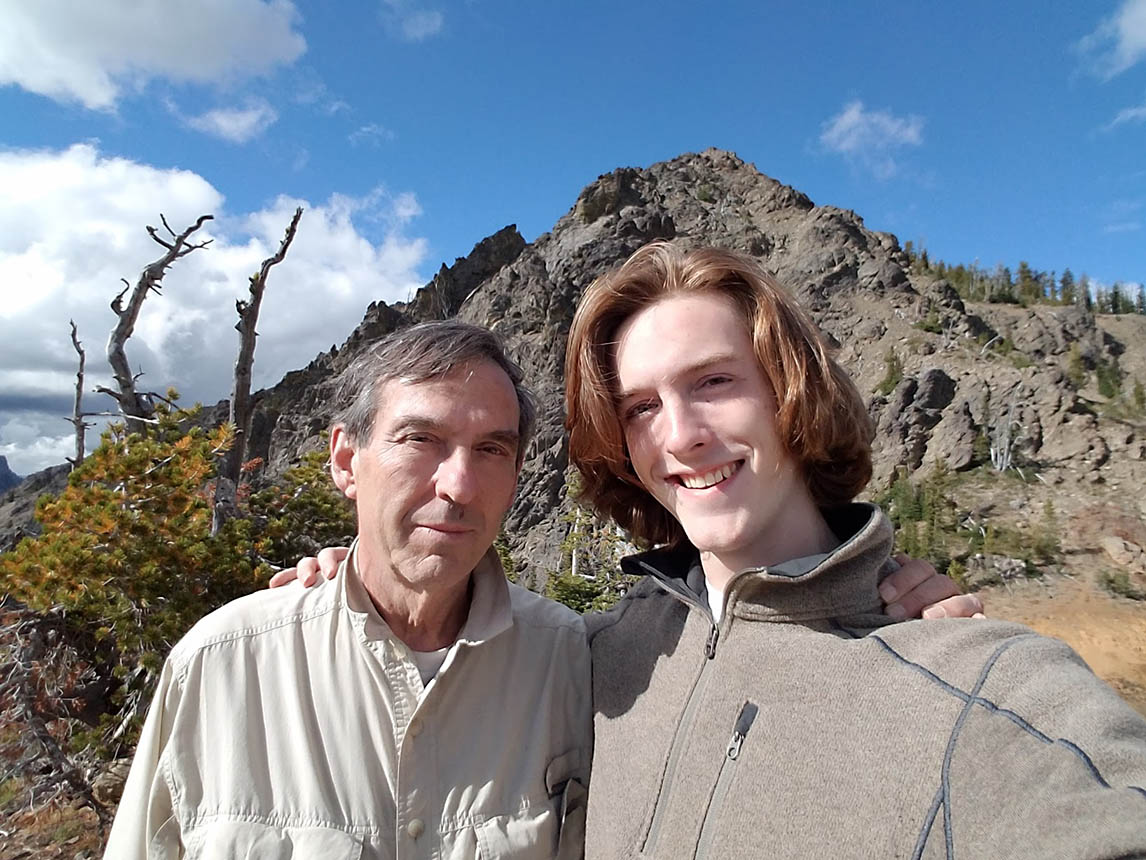 Garbriel Honeycutt started doing theatre when I was eight years old. I had been taken out of school because I was experiencing learning difficulties and was put in the Taproot Theatre after school program so that I could continue to have some kind of social life. I landed the role of Pinnochio in a children's play, and after that day I was hooked. I had originally been taken out of school because of my dyslexia and dysgraphia. I had already had issues fitting in, as I had been raised by a parent that was indigenous, elderly and from the midwest, a combination which fit in very poorly in the middle-class neighborhood where I was living at the time. I bounced around a few schools, going in and out of homeschool. I learned my love for storytelling not from school but from 826 Seattle, where I realized I loved writing just as much as acting. I’ve gone through a lot of changes in my life but what has always stayed consistent is my craft.
Garbriel Honeycutt started doing theatre when I was eight years old. I had been taken out of school because I was experiencing learning difficulties and was put in the Taproot Theatre after school program so that I could continue to have some kind of social life. I landed the role of Pinnochio in a children's play, and after that day I was hooked. I had originally been taken out of school because of my dyslexia and dysgraphia. I had already had issues fitting in, as I had been raised by a parent that was indigenous, elderly and from the midwest, a combination which fit in very poorly in the middle-class neighborhood where I was living at the time. I bounced around a few schools, going in and out of homeschool. I learned my love for storytelling not from school but from 826 Seattle, where I realized I loved writing just as much as acting. I’ve gone through a lot of changes in my life but what has always stayed consistent is my craft.
I acted up until I graduated high-school, took a year off, and then, returning to theatre, began writing a short play and taking acting classes at community college, alongside the other courses I was already taking. By the end of my 3rd year of community college I had performed in two plays and written/produced a 3rd. During that time I also worked as a student leader, a sandwich artisan and a volunteer educator at 826 Seattle, (now called the Bureau of Fearless Ideas), which is a non-for-profit writing and tutoring agency for children 6 to 18.
I came to Willamette Fall Semester 2019 to study Theater as an Acting Emphasis. It took sometime to get used to, but I think I’ve really fallen in love with this University. The campus holds so much knowledge and I’m glad I can call myself a student at Willamette University.
I am Mixed-Race, dyslexic and dysgraphic. I am an outsider. Or at least I’ve always felt that I was an outsider. My project focuses on definitions of deviance, how somebody can be turned into an outcast by the circumstances of early life. I like to explore themes of displacement, disability, labeling theory, rage and issues that face people that are Multi-Racial. It is important to me that my message be understood rather than have to be some kind of convoluted message, I’m a believer in transparency with the audience. The story should be clear, it is the questions raised by the story and shared with the audience that create the art.
Final Project: I Want This to End With Me
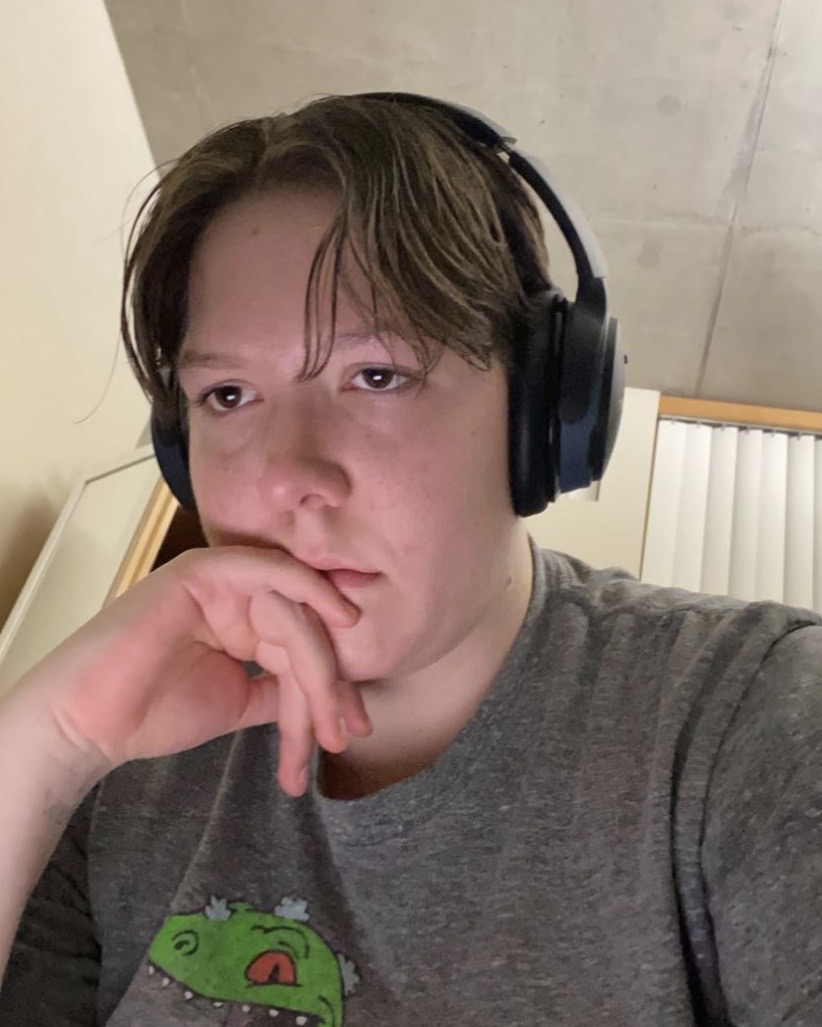 Clare “Lee” Lebeda is a multi-medium theatre artist and dancer, regardless of whether they believe it. They grew up in southern California under two CalArtians, who encouraged them to explore the vast edges of their creativity in its many forms. This exploration encompassed visual art, vocal and instrumental music, and theatre through high school, where they were often asked to play either hyperfeminine or male roles in plays. It is during this time that Lebeda began understanding their identity as multiply and fundamentally queer; their full list of titles is available upon request. They are a rising senior at Willamette University studying Theatre (Performance Studies) and Psychology, and their time studying and performing under the Theatre dance faculty is where their love of dance began. This passion is underscored by a belief in performance as self-representation, as well as the design wisdom instilled in them by their parents and professors.
Clare “Lee” Lebeda is a multi-medium theatre artist and dancer, regardless of whether they believe it. They grew up in southern California under two CalArtians, who encouraged them to explore the vast edges of their creativity in its many forms. This exploration encompassed visual art, vocal and instrumental music, and theatre through high school, where they were often asked to play either hyperfeminine or male roles in plays. It is during this time that Lebeda began understanding their identity as multiply and fundamentally queer; their full list of titles is available upon request. They are a rising senior at Willamette University studying Theatre (Performance Studies) and Psychology, and their time studying and performing under the Theatre dance faculty is where their love of dance began. This passion is underscored by a belief in performance as self-representation, as well as the design wisdom instilled in them by their parents and professors.
Sad People Dance Too is a dance series showcasing an unconventional dancer in the unnatural habitat of their body. This suite of five solo dances explores how and where my gender identity lives in my body, as well as the other heads reared by my otherness (fat, queer, mentally and chronically ill, etc.). Each piece sees my body inhabit the tension of being both object and subject – trying to act of its own accord while being acted upon by intangible forces – while it literally dances in the gap in between these roles. These dances are set to music that activates the corners of my body where these experiences live, and the title of this series, Sad People Dance Too, is pulled from the spoken opening lines of such a piece of music. As a multiply marginalized person, my body’s and my failures to live up to impossibly narrow standards of being can only be called “sad,” and I am called “sad” by extension. My project is a response to this construct, rooted in a desire to show embodied creativity as it arises not in spite of, but because of all the ways my existence is sad; sad people dance too.
Final Project: Queer Odyssey
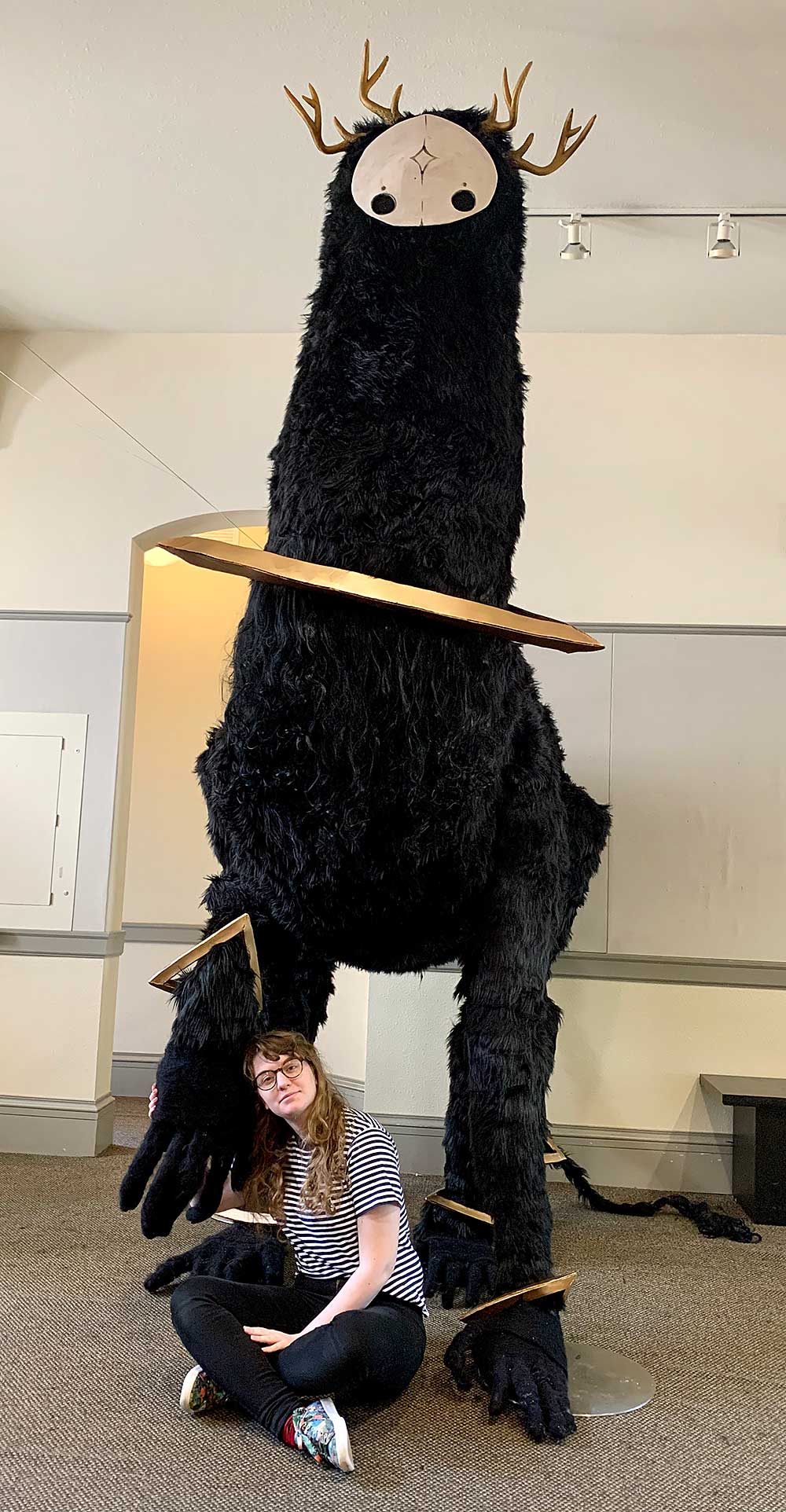 Having grown up in the household of a creative family, Emma Stocker has been making art for as long as she can remember. With a seamstress and crafter for a mom and a designer for a dad, she grew up learning from their skills throughout every step of her journey. She prefers to keep her work versatile and has worked in practically any medium she can get her hands on. Having always been fascinated with the ability to intersect fantasy with reality, her imagination feeds on the eerie mysterious landscapes of the Pacific Northwest and creates bizarre worlds and creatures to explore in her art. She’s well versed in both traditional and digital forms of art, and has extensive experience creating sculptural works both small and large. She loves turning ordinary and affordable materials into things that others can enjoy and create their own stories and realities for.
Having grown up in the household of a creative family, Emma Stocker has been making art for as long as she can remember. With a seamstress and crafter for a mom and a designer for a dad, she grew up learning from their skills throughout every step of her journey. She prefers to keep her work versatile and has worked in practically any medium she can get her hands on. Having always been fascinated with the ability to intersect fantasy with reality, her imagination feeds on the eerie mysterious landscapes of the Pacific Northwest and creates bizarre worlds and creatures to explore in her art. She’s well versed in both traditional and digital forms of art, and has extensive experience creating sculptural works both small and large. She loves turning ordinary and affordable materials into things that others can enjoy and create their own stories and realities for.
For the Schuchat Grant I will be pursuing the task of creating three large-scale lifelike fantasy creatures, inspired by a series of cyanotypes I did last year inspired by the landscape and scenery of the Pacific Northwest. While based on the original series I aim to create my pieces with as much detail as possible to give them the illusion of being real. They will be a portable kind of installation, each creature being fitted with an armature that will allow them to be posed and articulated to suit their installation site. I have clear timeline set in place that also allows for any troubleshooting I will inevitably have to sort out, by the end the goal is for me to have three full-sized creatures to be displayed in a gallery space alongside photos of them stages in more natural sites, at the moment I have already determined the site for these photos but have back-ups should the situation change.
Final Project: Cryptids
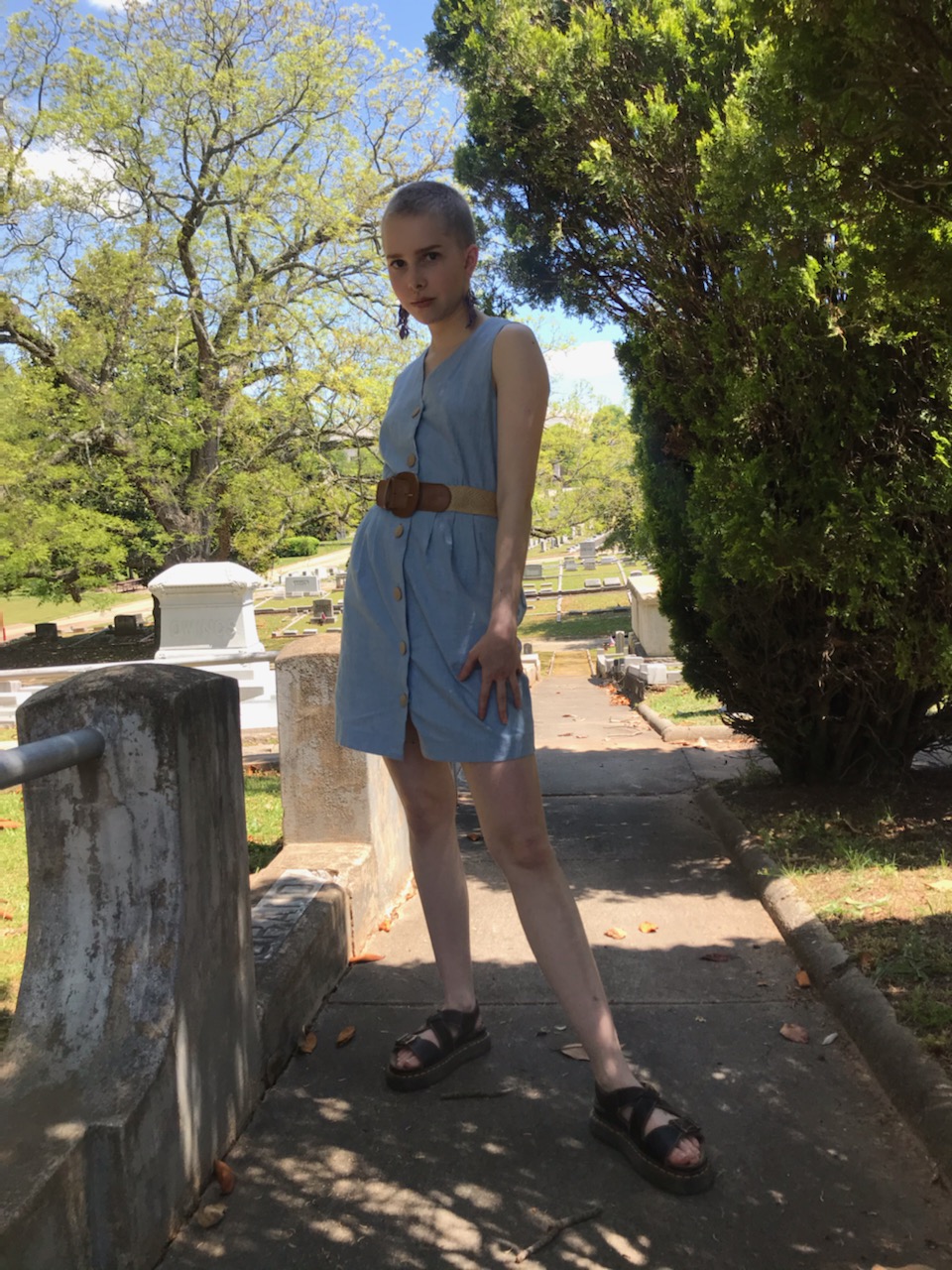 Billy Ullmann is a queer and nonbinary artist, with interests in the ideas of connection, anxiety, and the senses. Raised by their mother and grandparents in South Carolina, they are now a rising junior and a Studio Art and Philosophy double major at Willamette University. They enjoy working within a variety of genres, including installation, drawing, and painting. They prefer to work obsessively but playfully, finding and creating patterns to explore and break. Even before being taught to knit by their grandma at age 11, one of their favorite materials has always been yarn, due its versatile and sensory qualities and they enjoy using it to create soft and stringy works. Billy Ullmann hopes to continue their artistic practice throughout their life, in whatever form it ends up taking.
Billy Ullmann is a queer and nonbinary artist, with interests in the ideas of connection, anxiety, and the senses. Raised by their mother and grandparents in South Carolina, they are now a rising junior and a Studio Art and Philosophy double major at Willamette University. They enjoy working within a variety of genres, including installation, drawing, and painting. They prefer to work obsessively but playfully, finding and creating patterns to explore and break. Even before being taught to knit by their grandma at age 11, one of their favorite materials has always been yarn, due its versatile and sensory qualities and they enjoy using it to create soft and stringy works. Billy Ullmann hopes to continue their artistic practice throughout their life, in whatever form it ends up taking.
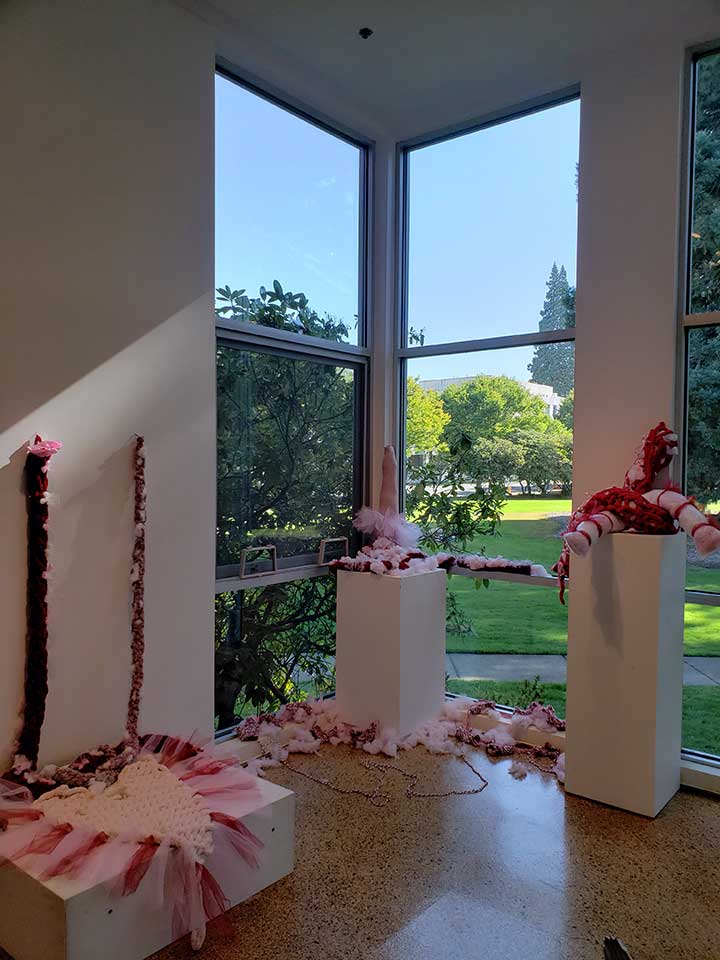 My project, currently titled “If I don’t know what the right thing to do is, then I’m just going to go to bed,” explores themes of comfort, agency, familial ties, and the feelings behind these things. I plan on exploring the idea of patterns, within both family traditions and the repetitive nature of fiber art. Taking the anxiety and knitting skills passed down from my grandmother and my mother, I plan on creating a large installation of fiber art where viewers are immersed in a soft and soothing sensory experience. Some specific aspects may include arm knit panels to cover the walls, a suspended knit tube, and needle felted objects. In addition to crafted objects, I want to use ‘raw’ textile materials to enhance the feeling of softness in the space.
My project, currently titled “If I don’t know what the right thing to do is, then I’m just going to go to bed,” explores themes of comfort, agency, familial ties, and the feelings behind these things. I plan on exploring the idea of patterns, within both family traditions and the repetitive nature of fiber art. Taking the anxiety and knitting skills passed down from my grandmother and my mother, I plan on creating a large installation of fiber art where viewers are immersed in a soft and soothing sensory experience. Some specific aspects may include arm knit panels to cover the walls, a suspended knit tube, and needle felted objects. In addition to crafted objects, I want to use ‘raw’ textile materials to enhance the feeling of softness in the space.
Final Project: Knot Feelings

